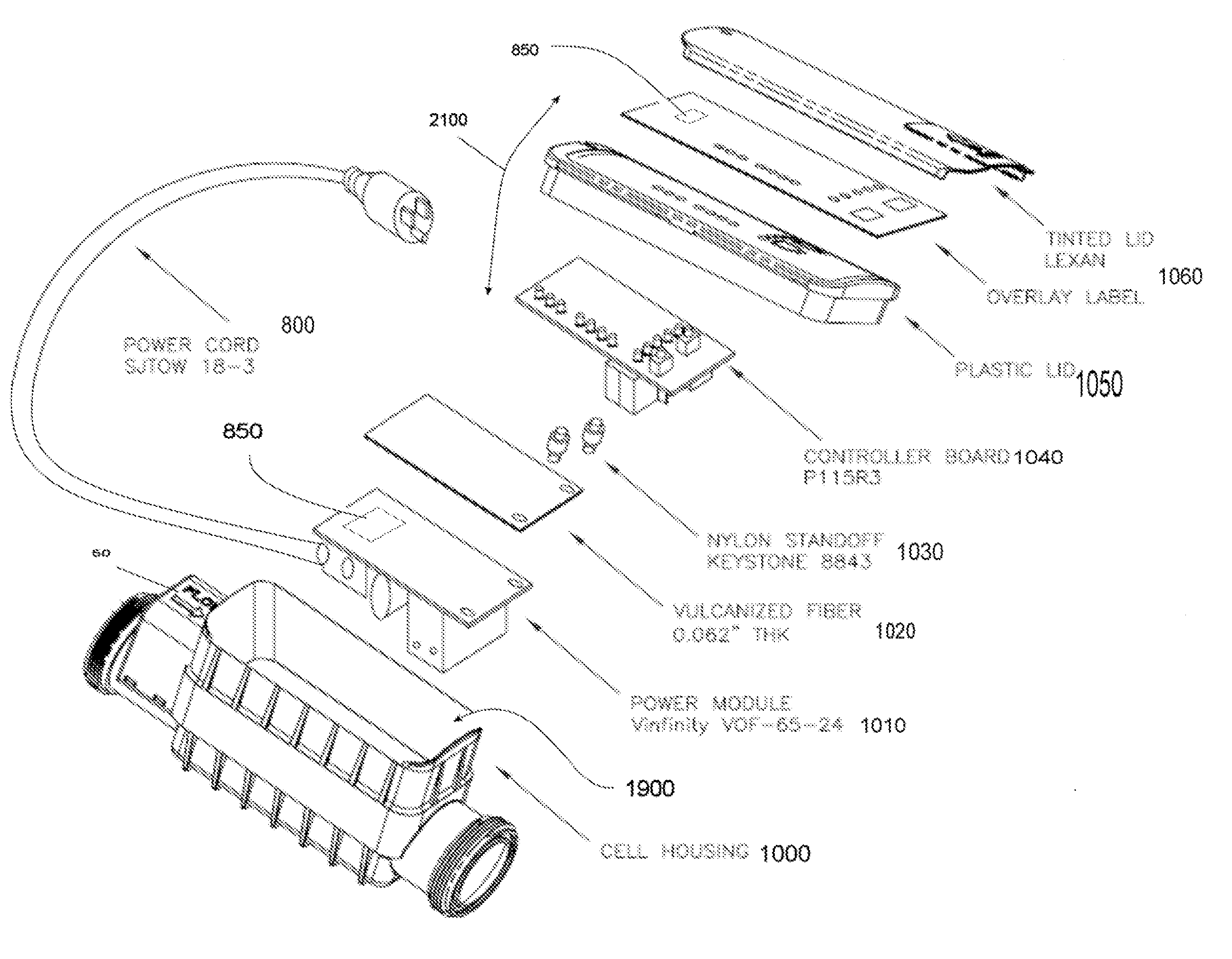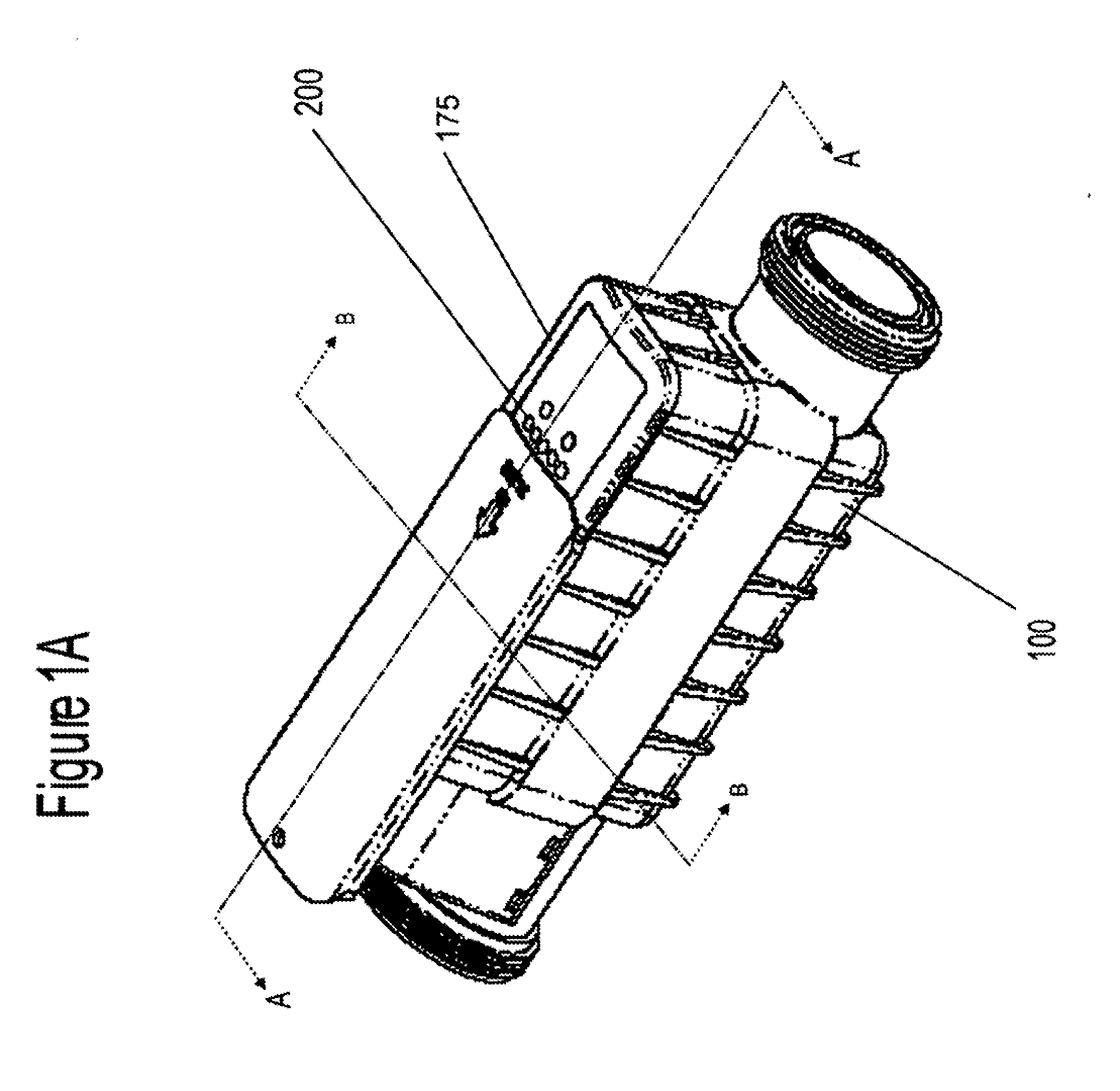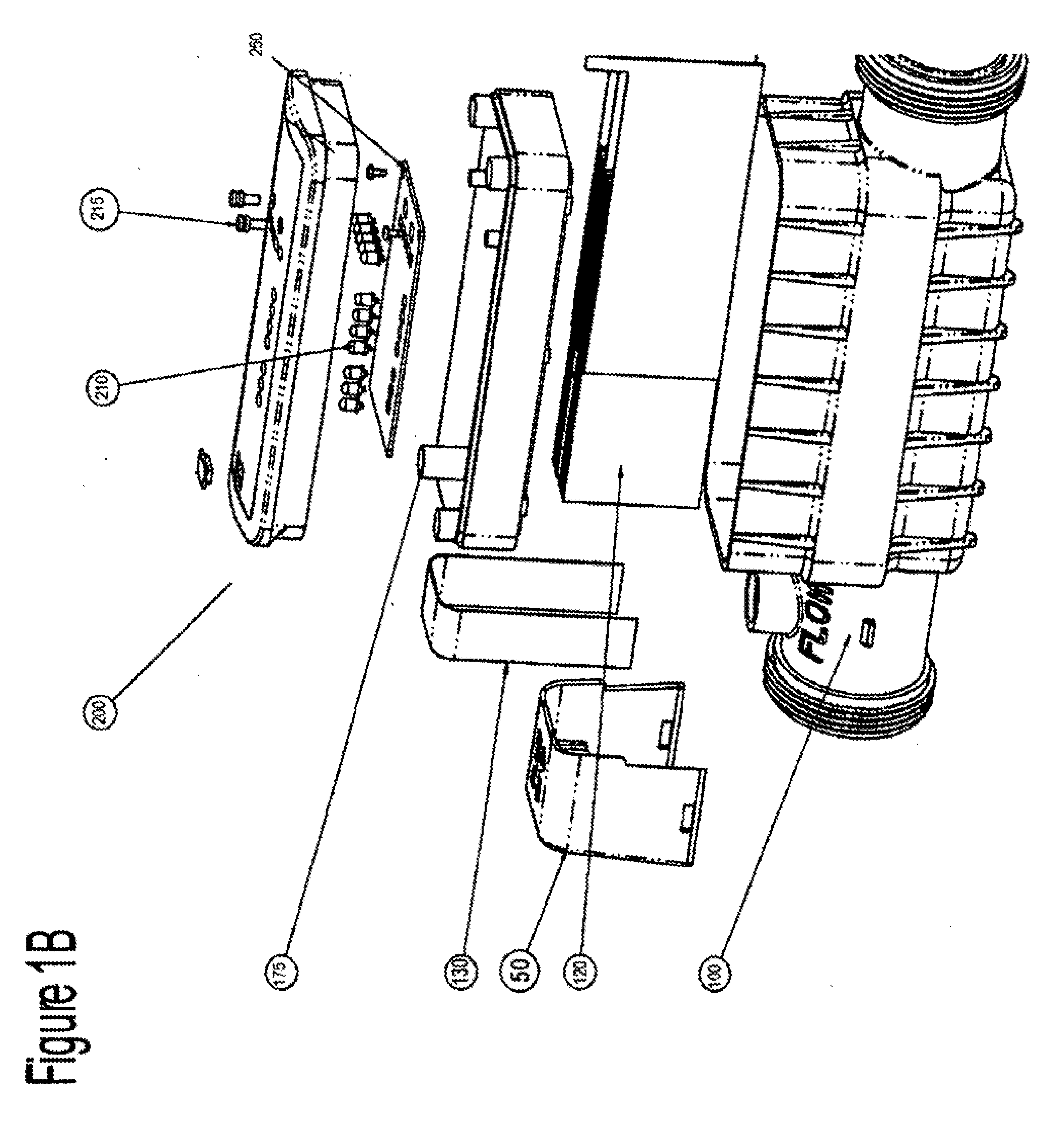Inline chlorinator with integral control package, heat dissipation and warranty information accumulator
a chlorinator and control package technology, applied in the field of water purification, can solve the problems of unstable ozone chemical, unusable byproducts, and neither system leaves a residual disinfectant in the water supply, and achieves the effect of convenient maintenance and user-friendly
- Summary
- Abstract
- Description
- Claims
- Application Information
AI Technical Summary
Benefits of technology
Problems solved by technology
Method used
Image
Examples
Embodiment Construction
[0048]FIG. 1A shows an isometric view of an exemplary embodiment of the instant invention and FIG. 1B illustrates an exploded view of the exemplary embodiment of FIG. 1A. The system is designed to be put inline with a water input line. The chlorinator or chlorinator unit has a housing 100. The housing may be comprised of any suitable material and is a unitary housing in the exemplary embodiment. This material may be, for instance, but is not limited to a heavy-duty plastic or any suitable material which has sufficient durability in the highly chlorinated environment.
[0049]The housing 100 has an inflow or input side 150 wherein water flows into the chlorinator. A flow switch 50 is included with a cover. The water passes through the housing and through a series of electrolytic plates 120. The electrolytic plates 120 are typically matched sets of anode and cathode plates comprising copper or other suitable materials to provide an electrical current sufficient to separate the chlorine f...
PUM
| Property | Measurement | Unit |
|---|---|---|
| power | aaaaa | aaaaa |
| inductance | aaaaa | aaaaa |
| resistance | aaaaa | aaaaa |
Abstract
Description
Claims
Application Information
 Login to View More
Login to View More - R&D
- Intellectual Property
- Life Sciences
- Materials
- Tech Scout
- Unparalleled Data Quality
- Higher Quality Content
- 60% Fewer Hallucinations
Browse by: Latest US Patents, China's latest patents, Technical Efficacy Thesaurus, Application Domain, Technology Topic, Popular Technical Reports.
© 2025 PatSnap. All rights reserved.Legal|Privacy policy|Modern Slavery Act Transparency Statement|Sitemap|About US| Contact US: help@patsnap.com



